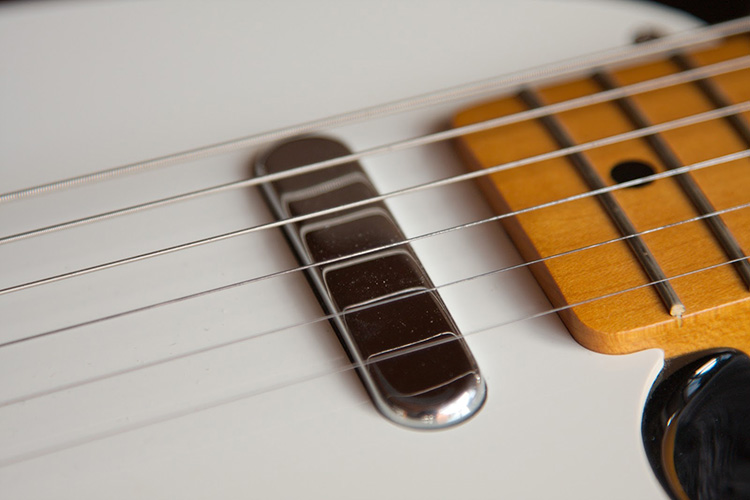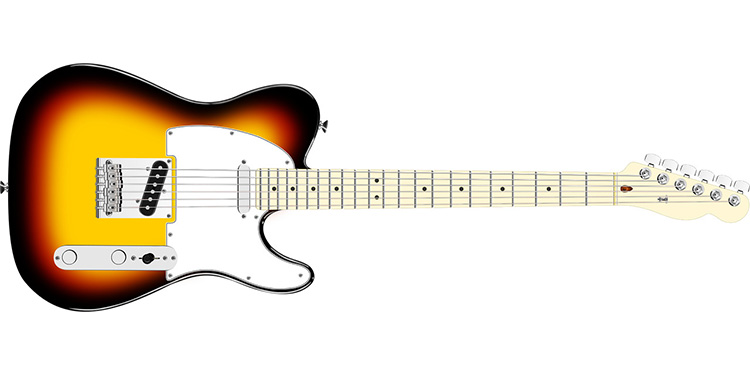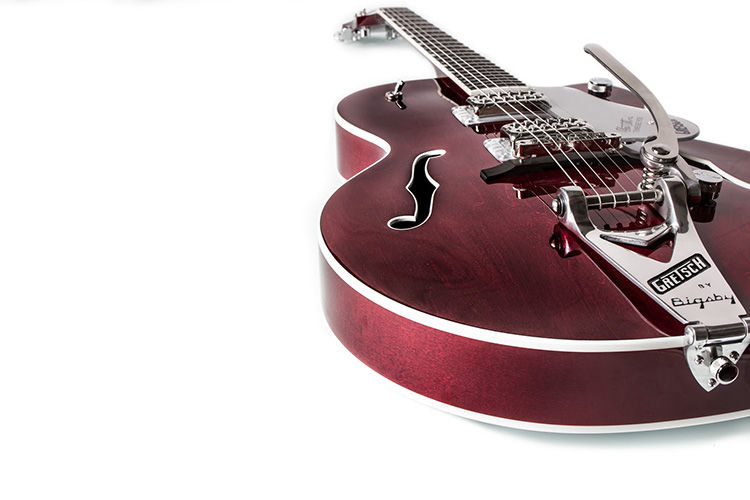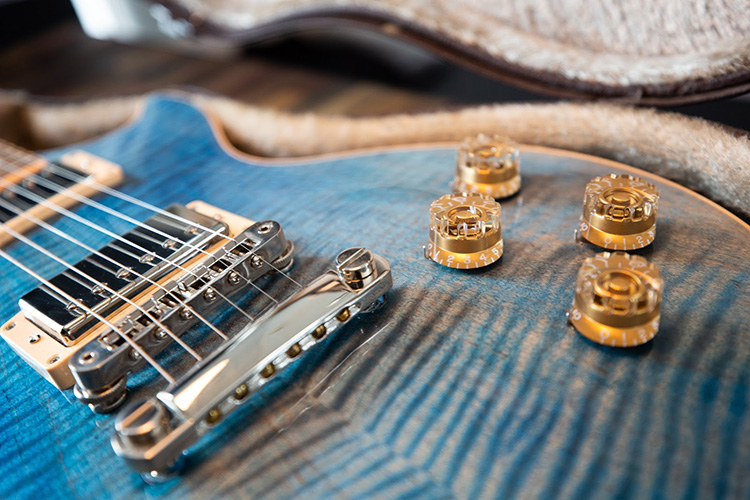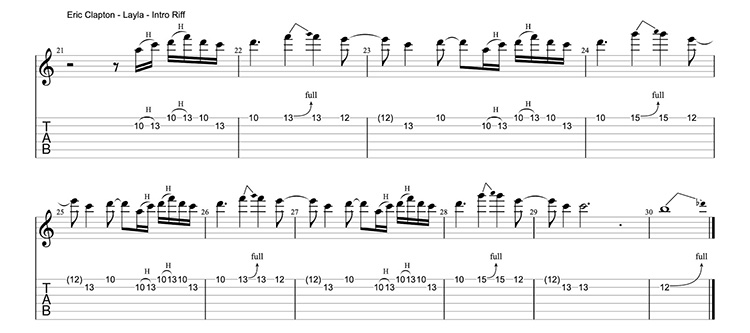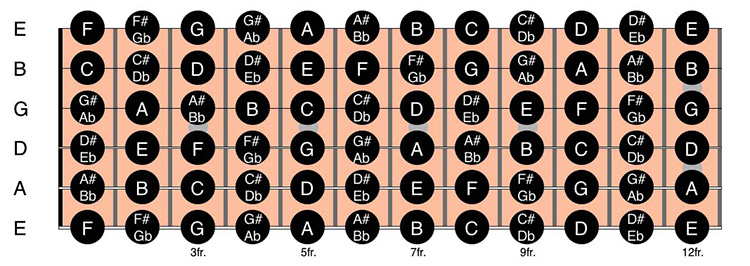D minor scale guitar is one of the most important guitar scales that you will ever learn. In this guitar lesson we’re going to show everything you need to know about this cool scale.
Over 100,000 guitar-learners get our world-class guitar tips & tutorials sent straight to their inbox: Click here to join them
In this free lesson you will learn:
- 4 essential D minor scale patterns.
- 3 easy scale tips that will make you sound amazing.
- How to jam with the D minor scale in 4 easy steps.
- 2 epic songs that use the D minor scale.
The D Minor Scale Is Full Of Colour
Made up of seven notes, the D minor scale is used in a variety of genres from Pop and Country to Blues and even Heavy Metal.
- This versatile guitar scale is packed with possibility and adds a moody vibe to our guitar playing.
- In this D minor scale guitar lesson, we’re going to break down the essential scale positions as well as the chords within the scale itself.
At the end of the lesson, we’ll take a look at two famous songs in this key to help you round out your knowledge.
Take the time to practice each one of these examples before moving on to the next.
We’ve paced this lesson out so you can build on your skill level as you progress, so give yourself the time you need to learn effectively.
Let’s get started!
D Minor Scale Guitar Lesson – What Does It Sound Like?
Often labelled by musicians as one of the saddest keys in music, this scale can be as dark as you want it to be.
As a result of this, you’ll often find the D minor scale being used in sad ballads.
Keep some tissues nearby.
- Besides being used to write sad love songs, we can also use this scale to write dark and groovy music, like ‘Layla’ by Eric Clapton for example.
- The famous composer Hans Zimmer is also noted for using the key of D minor excessively in compositions such as the Dark Knight Trilogy and Pirates of the Caribbean.
The D minor scale is what is known as a ‘diatonic scale,’ meaning it is composed of seven notes.
- This gives us a wider range of possibilities than other scales like the pentatonic scale. This is due to its two extra notes.
- These notes may not seem like much at first, but every note makes a world of difference in the tonality of the scale we are playing.
Make sure to pay attention to each note. This helps us hear how each note works within the scale.
Download our lead guitar cheat-sheet to make things easier
It's hard to understand which scales work with which keys.
So we created a cheat-sheet! A key and scale-finder that you can use again and again.

Get your personalised guitar-learning plan 🎸
Get a custom guitar-learning plan here: Click here for GuitarMetrics™
World-Class Guitar Courses 🌎
Learn from the world's best guitar educators: Click here for our guitar courses
D Minor Scale Guitar Lesson: The Root Position
The ‘root position’ is a shape where we begin on the root note of the scale.
- We can find three different positions on the bottom three strings (E, A, D) where we can play this scale shape.
- In order to help us with our knowledge of the D minor scale guitar fretboard, it’s important to learn all three of these positions.
- A good rule of thumb as a guitarist is to learn any scale in as many positions as possible up and down the neck.
This will help you to build your mental map of the fretboard, and teach you the multiple spots where you can find the same set of notes.
D Minor Scale Guitar – 1 Octave Scale (Root On E)
It’s important to take note of our fingers when we learn the D minor scale guitar positions.
- Due to the fact that this scale shape is four frets in length, it’s perfect for our hands.
- Each finger should have an assigned fret within the scale shape to keep your playing smooth.
In this case, our fingers should be on the following frets:
- 10th fret – 1st finger. (Index).
- 12th fret – 3rd finger. (Ring).
- 13th fret – 4th finger. (Pinky).
We want to focus on not moving our hand position outside of the ‘box shape,’ so make sure each finger knows where it needs to be!
When playing these scale shapes, focus on alternate picking to help keep things smooth.
We want to play these shapes slowly and clearly, so pay attention to how each note rings out.
Now that you’ve played the scale in one octave, try it in two:
When playing this scale in two octaves, watch out for the position shift on the G string. When you reach this string, use these fingers on the following frets:
- 9th fret – 1st finger. (Index).
- 10th fret – 2nd finger. (Middle).
- 12th fret – 4th finger. (Pinky).
D Minor Scale Guitar Lesson: Three Positions – One Scale
As we have discussed, we can play this scale in multiple positions.
As we learn to improvise over pieces of music, it will be a huge help to us to know the various positions that make up the D minor scale guitar fretboard.
D Minor Scale Guitar – Root on A String
In this second position, we will play the scale starting from the A string.
- Keep in mind that these two other positions that we will learn are still considered ‘root positions’ because we are starting on the note ‘D’.
- To learn more about root notes, go here: What Is The Root Note Of A Chord?
- Take note of the slight difference in pitch you may hear when playing the scale from the A string.
Remember that each string is a different thickness and is tuned differently. When we play the same notes with different string combinations, they will resonate in a slightly unique way.
Once you’ve mastered this scale in the 1st octave, it’s now time to take on the 2nd octave. You can learn this scale position here:
D Minor Scale Guitar – Root on D String
Learning to play the root D minor scale guitar shape from the open D string requires a bit more practice, as we are using open strings in this shape.
Keep your index finger at the first fret, with your middle and ring at the second and third to make sure you’re covering all the necessary ground.
Once you can play this scale in its 1st octave, challenge yourself and try and play the second octave. Here’s the tab for that:
Pro Tip: As you learn the different scale shapes, pay attention to where the notes are on the fretboard. A good exercise that you can do is, find the notes along the fretboard.
Once you’ve mastered these three shapes, try and find the same notes elsewhere on the fretboard. How many combinations can you find? We’ve included a fretboard further down for your reference.
D Minor Scale Guitar Lesson: Theory
In order to improve our playing and cement our D minor scale guitar knowledge, we need to dive into some music theory.
This seven note scale contains the following notes and corresponding intervals:
- D (Root).
- E (Major 2nd).
- F (Minor 3rd).
- G (Perfect 4th).
- A (Perfect 5th).
- Bb (Minor 6th).
- C (Minor 7th).
One way to quickly help us improve our D minor scale guitar knowledge is to measure the spaces between the notes. We measure these in ‘whole tones’ (2 frets) and ‘half tones’ (1 fret).
The D minor scale guitar pattern is:
Whole Tone, Half Tone, Whole Tone, Whole Tone, Half-Tone, Whole Tone, Whole Tone
The notes, as well as the pattern of these whole and half tones is what gives the D minor scale its unique sound.
If we change any of these notes or the spaces between them, we will end up playing a different scale altogether.
Pro Tip: Saying the names of the notes out loud while we play will help us to memorize the notes and their positions.
This is a great exercise for beginner guitarists working on their D minor scale guitar knowledge.
- If you think it sounds silly out loud, you’re not alone.
- Speaking the notes we play out loud will help our brain to associate note names based on the sound we are hearing.
- You might look silly, but you’ll have sharper ears as a result.
D Minor Scale Guitar Lesson: Chords
The chords of a scale are just as important as the notes we play, and so it’s crucial that we learn them all.
As the D minor scale has seven notes, there are seven corresponding chords to play.
- D minor.
- E diminished.
- F major.
- G minor.
- A minor.
- Bb major.
- C major.
By playing these chords in any order, we can easily write a song in D minor.
The advantage of learning the chords of a scale is that we can hear the context of the scale more easily when we learn the order of the notes.
Take some time to practice these chords, and try writing a few chord progressions of your own as a practice exercise.
Writing music is excellent practice, even if it we find it difficult. Writing different progressions will help us further understand how chords and notes interact with one another.
Experiment with different strumming patterns and get an understanding of how this key makes you feel. This is an important step toward training your ear.
✅ Stop struggling. Start making music. ✅ Learn beginner-friendly versions of every chord. This is our most popular guide and it will improve your chord ability quickly! 😎 Get a custom guitar-learning plan here: Click here for GuitarMetrics™ Learn from the world's best guitar educators: Click here for our guitar coursesLearn 12 EASY beginner chords with our popular guide

Get your own personalised guitar-learning plan 🎸
World-Class Guitar Courses 🌎
D Minor Scale Guitar Licks: ‘Come Together’ by The Beatles
The Beatles have plenty of songs in minor keys, but ‘Come Together’ is definitely one of the most memorable.
- An often covered, yet never truly imitated classic, this song features a stellar guitar and bass groove throughout that keeps our heads bobbing.
- We’ve included tabs for both the guitar intro and the vocal line so you can switch things up a bit.Learning musical lines from other instruments (including the voice) is a great practice routine to get into, so try it often.
With the intro riff, start out with your index finger barred across the E and A strings.
This will make it easier to hammer-on to the 12th fret on the A string.
Use that hammer-on as an opportunity to move your index finger to the D string to end on the 10th fret.
For the vocal line, we can use our index and ring fingers to play.
- This line is extremely straightforward – listen to the song to hear how long each note lasts for.
- One of the most interesting parts of this vocal line is that the singer does not start on D.
- Instead, they begin on F (1st fret E string) and then step down to D (3rd fret B string).
- This sets up for some interesting interplay between the instruments and the vocalist.
One of the beautiful parts of music is that a band doesn’t have to all be playing the same music in order to write a song.
Keep your ears peeled for musical moments like this in every song you hear – They’re always there.
D Minor Scale Guitar Licks: ‘Layla’ by Eric Clapton
This classic blues-rock tune contains one of the most classic guitar riffs ever recorded by one of rock and roll’s most influential guitar masterminds.
- This D minor scale guitar riff takes us up the fretboard to the 10th fret.
- We’ll want to use our index and pinky fingers to cover the stretch from the 10th to the 13th fret.
- When we get to the bend in the second bar, we can bend with our ring finger at the 13th fret and our middle finger on the 12th.
This is called a ‘reinforced bend’ and will help us hit our target note easier.
In the fourth bar at the 15th fret, we will want to use the same technique.
This riff is an excellent challenge for keeping our fingers organized while moving around the fretboard.
Be mindful of your other fingers and their positions, as we will want to leave the middle and index fingers open to move back down the fretboard towards the 10th fret.
Challenge Yourself: It’s important to learn to play the D minor scale in as many positions as possible in order to maximize your knowledge of notes on the fretboard.
We’ve included a fretboard below for you to keep track of all the spots that you can play this scale. How many can you find?
Where Do I Go From Here?
Want to keep pushing the limits of your D minor scale guitar knowledge?
We recommend:
- Write a song using the chords of the D minor scale.
- Try writing your own guitar riffs using this scale.
- Sing the notes of the scale as you play them to train your ears.
- Try moving this scale shape into a different key, and learn the chords in that key.
- Try soloing over different backing tracks in D minor on YouTube.
Recommended Resources
If you loved this D minor scale guitar lesson, check out some more of our free lesson content below!
- How To Read Guitar Tabs
- Lead Guitar Lessons For All Guitarists
- How To Play In Time
- A Minor Pentatonic Scale: An Essential Guide
- E Minor Pentatonic Scale: The Ultimate Guide
What Type of Guitarist Are You?
Take our 60-second quiz & get your results: Take The Quiz
Join the world's best online guitar school 🌎
- Get your own personalised guitar learning plan (customised just for YOU).
- World-class online guitar courses. Learn at your own pace.
- Community Campus & Learning Forum - A friendly community! Connect with our team & students. 😊
- Beginner Song library with chordsheets, tabs and tips. (Songs suitable for all levels!)
- Regular live streams, seminars and Q&A sessions - Learn from world-class guitar educators. Get all your questions answered!
Click here to learn more about National Guitar Academy membership 
Cool Guitar T-shirts 😎
Look cooler! Check out our merch: Click here to see our merch store
Want free guitar tips and video lessons delivered to your inbox?
Join over 100,000 guitar-learners and subscribe to our guitar-tips-by-email service. (It's free.)
We'll send you a series of lessons that will move you to the next level of your guitar journey.
Learn how everything fits together quickly, easily and effectively. We share ninja tips (for instant fun!) but also timeless fundamentals that will deepen your understanding.

Popular Lessons
How To Learn Guitar: An 11-Step Programme For Beginners
How To Choose The Perfect Beginner Guitar
More Cool Guitar Stuff
Learn about National Guitar Academy: About Us
Join us on Facebook for daily guitar tips.
Listen to our Learn Guitar Podcast for rapid guitar progress.
Check out our free chord lessons.
Get our best guitar tips & videos
Where should we send it?
Where should we send it?
Get our best guitar tips & videos



